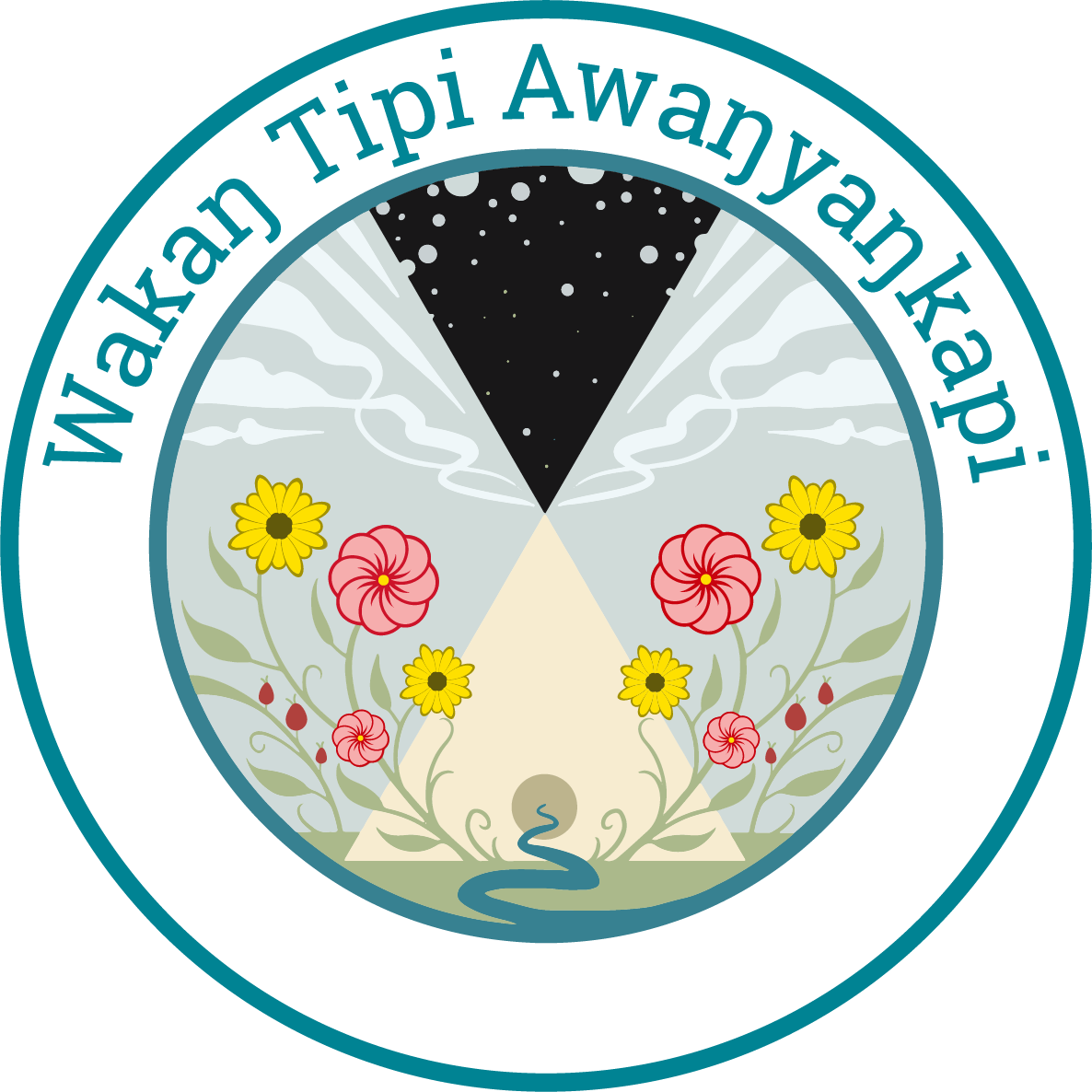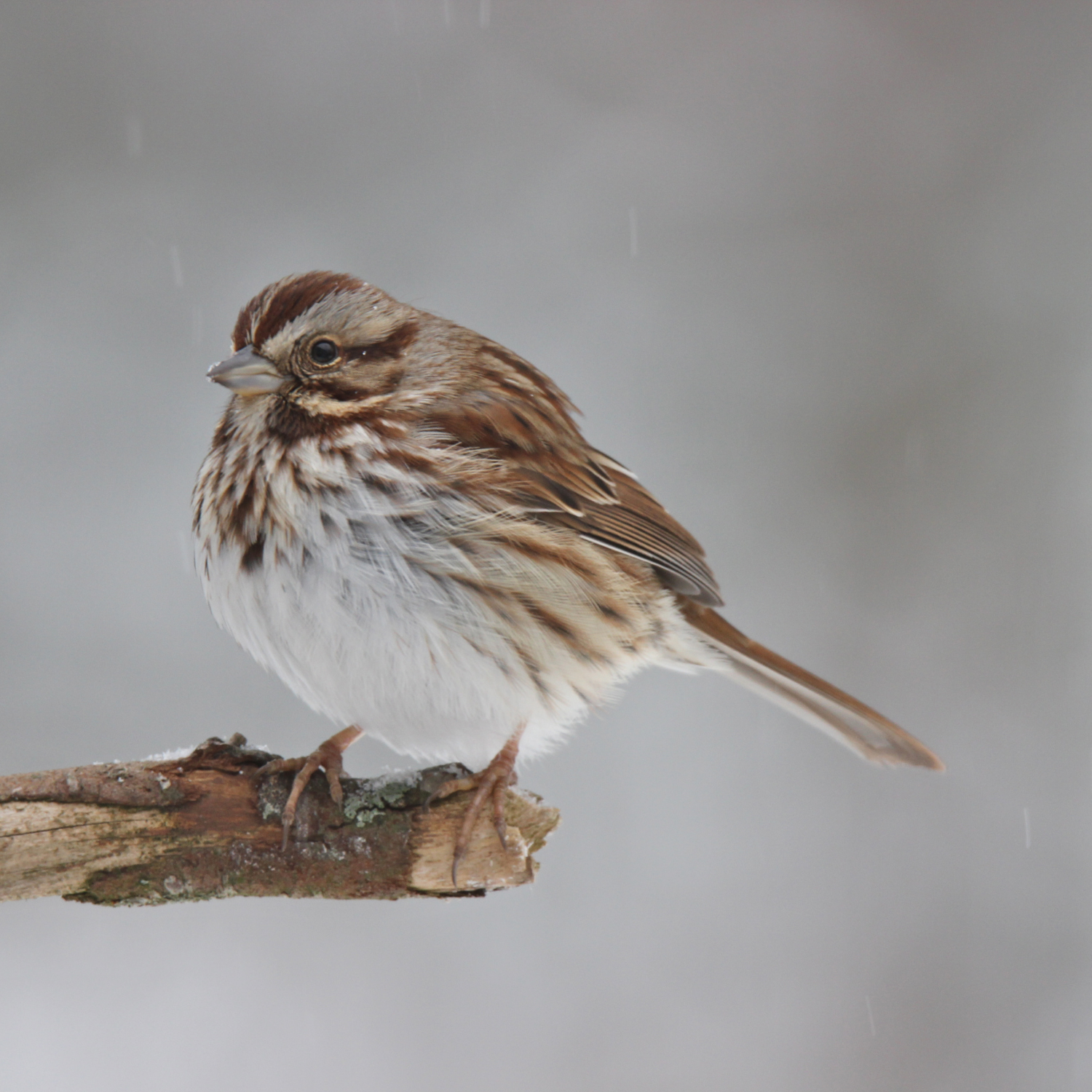A group of people in winter coats look up at the sky for birds.
“I prefer (...) my excursions into the natural gardens where the voice of the Great Spirit is heard in the twittering of birds, the rippling of mighty waters, and the sweet breathing of flowers.” — Zitkála Šá
There is a special bond between our winged relatives and all members of the Očéti Šakówiŋ. From as far back as our very creation stories take us, birds have been sharing their knowledge and shaping our lives with their contributions to our ecological community. In our traditional stories they play many roles including that of a messenger, being a helper or a foe, having great creativity and cunning or being gullible, but always possessing their own will and way to do things. We have yet much to learn from the Kíŋyaŋpí Oyate-the Flying Nation, whose members are now at risk due to loss of habitat and climate change among other things. This month’s blog focuses on the gifts these cherished relatives continue to share with us, the threats they face in a changing landscape and the role we play in aiding them.
Who Sticks Around for the Winter?
Wakáŋ Tipi has not only been an important gathering place for humans from time immemorial, it has also been central to the lives of innumerable bird species. Directly adjacent to the life sustaining waters of Wakpa Taŋka-The Mississippi, Wakáŋ Tipi is situated along the largest migratory route in the country, called the Mississippi Flyway. This flyway is one of just four in the United States and is where almost half of all bird species spend at least part of their lives, making us two-leggeds incredibly lucky to witness the number and diversity of bird relatives we do throughout the seasons.
The unique and varied habitat of Wakáŋ Tipi also makes it the perfect home to numerous bird species at any point in the year. Especially in the summer, the open prairie attracts grassland species like the meadowlark, sparrows, and goldfinch while the fruit-bearing shrubs and trees attract robins, bluejays, and cardinals. The ponds are frequented by waterfowl like mallards even in the coldest months. Red-tailed hawks, turkey vultures, and eagles can often be seen soaring along the overlooking sandstone bluffs. Even an owl has been spotted amongst the trees!
On a chilly morning last month we joined leaders from the Urban Bird Collective and over twenty members of the community for a winter bird walk at Wakáŋ Tipi to see which of these birds have stuck around for the season. By simply walking the length of the sanctuary, observing the distinct species and the number of individuals present, and documenting this information, the group provided a valuable set of data. (We’ll discuss more about the incredible potential of community science projects later on!) However, as has been discussed on our blog before, this event was about more than data. As important as the cataloguing of wildlife is, so too are the relationships we build with the other beings with which we share this home. Birds after all are not just numbers, they are relatives. And when we venture out to see which of them remain in Mni Sóta throughout the winter months, we must do so with respect. It is in this way that our partnership with Urban Bird Collective has been so joyful; our colleagues recognize the critical importance of making the act of birding accessible and meaningful for everyone in our communities. Carrying ourselves in this way, and collaborating with those who share their knowledge and perspectives on birding with us all, we can move through Wakáŋ Tipi with confidence and comfort.
Listed below are just some of the many birds we witnessed on our walk with UBC last month and the gifts they bring to our ecosystem.
ŠiŠóka
American Robin
This relative resides near Wakáŋ Tipi year-round. In the winter months, you’ll find robins searching for fruit (which makes up almost 60% of their diet!) on the branches of hackberry, nannyberry, and highbush cranberry, or taking a bath in the open water of the bluff-fed springs.
WaŋbdítHaheya
American Goldfinch
Even though that golden plumage may dull slightly in the winter months, you’re just as likely to hear a goldfinch as see one! Watch for them in shrubby, weedy stands and near open fields.
KHaŋǧí
American crow
Social, intelligent, and resilient — what’s not to like about crows? Their flexible and wide-ranging diet, as well as their critical thinking, make them well-adapted to living near human communities. Their large gatherings can get a little loud, but otherwise, they’re good neighbors!
phačhaŋšihúta
house Sparrow
Perhaps one of the relatives we spend the most time with, sparrows have taken to the human way of life. You’ll find them nesting in buildings or hopping around on the ground in search of seeds and insects.
WičhátHaŋkaDA
Ring-Billed gull
This waterbird makes its home on the shores of the Wakpa Taŋka. Gulls aren’t too picky about what they eat — even food scraps and other trash are fair game! Limiting single-use products and properly disposing of our garbage helps keep these relatives healthy.
Thatéte Čhaŋnúŋǧa
Downy woodpecker
The smallest woodpecker in North America is busy these months — drilling for insects requires a bit more work, and it’s also mating season! Listen for these relatives drumming to each other, and spot their carpentry skills in dead trees and branches.
Thiwákiŋyeda
rock pigeon
Another familiar face, the pigeon has long been one of humanity’s closest winged relatives. Brought to Mni Sota by European settlers, pigeons have adapted to urban life, nesting high up in skyscrapers and subsisting mostly off of food scraps we leave behind.
PHaǧúŋta
Mallard
You’ve seen them around — mallards are one of the most familiar and most abundant ducks in the world! Though they often make their nests a mile away from open water, they spend most of their time in the many lakes and waterways of Mni Sota.
Thoskáda
Hairy Woodpecker
No, we didn’t take two photos of the same bird! Hairy woodpeckers are larger, and have a longer bill than their close relatives. Outside of a similar mating season, they spend more of their time on bigger branches and trees to feed a big appetite.
phačhaŋšihúta
dark-eyed Junco
Typically woodland-dwellers, juncos share some similarities to other sparrows, and can vary widely in appearance. They do most of their nest-building and foraging close to the ground, and in the winter, they eat mostly grass seeds.
čhaŋšká upíǧi
REd-Tailed hawk
This high-flyer might like to get involved in our community science work: each summer, we conduct a survey of small mammals living in the prairie and woodland ecosystems. These voles and mice make for good eating!
waŋbdí | aŋúŋkhasaŋ
Bald eagle
DDT and other toxins once threatened the very survival of the Waŋbdí, and it is only within the last twenty years that we have begun to see this beloved relative return to Mni Sota Makoce in strength. Stretches of open water along the Wakpa Taŋka, high bluffs, and tall cottonwoods make Wakáŋ Tipi the perfect home for a nesting pair.
Ways to Help
Due to a changing climate, record high temperatures, record rainfall, fires, and droughts like we saw last year have unfortunately become recurring events in Minnesota. It is apparent how much these disruptions affect our lives but perhaps less so how these events affect our birds. In an article we shared last November, a Gwich’in elder from Alaska reflected on the loss of birds and the loss of bird song over the course of his life. When at once the birds were so numerous and so loud that he could not sleep, now there is silence. So how do we preserve the livelihood of our winged relatives for generations to come? How do we keep the beautiful bird song in our parks, our backyards?
Of course, the first step to helping birds is to support habitat conservation at every level be it local, state, or national efforts and to also advocate for climate resiliency measures and a just transition at every opportunity. These are the most basic yet fundamental and necessary actions that we as a society must work towards to preserve the well-being of our winged relatives.
Other opportunities to aid bird species include participation in community science. The basis of many community science opportunities involve simply counting birds by species. The more data we have on where, when, and what type of birds are around, the better we can advocate for them and create management plans that address their needs.
Another beneficial step you can take right now is to feed birds throughout the winter. Although many of the bird species that stay in Mni Sóta are hearty and well-adapted to brave the cold, unpredictable weather conditions throughout the year may have impacted both the availability of food and stored food resources. The Cornell Feeder Watch is a great tool when planning both the type of bird feeder and the type of food birds in our area could use. At this point in the year, nutrient dense foods like black oiled sunflower seeds, peanut butter, and suet are the best option.














